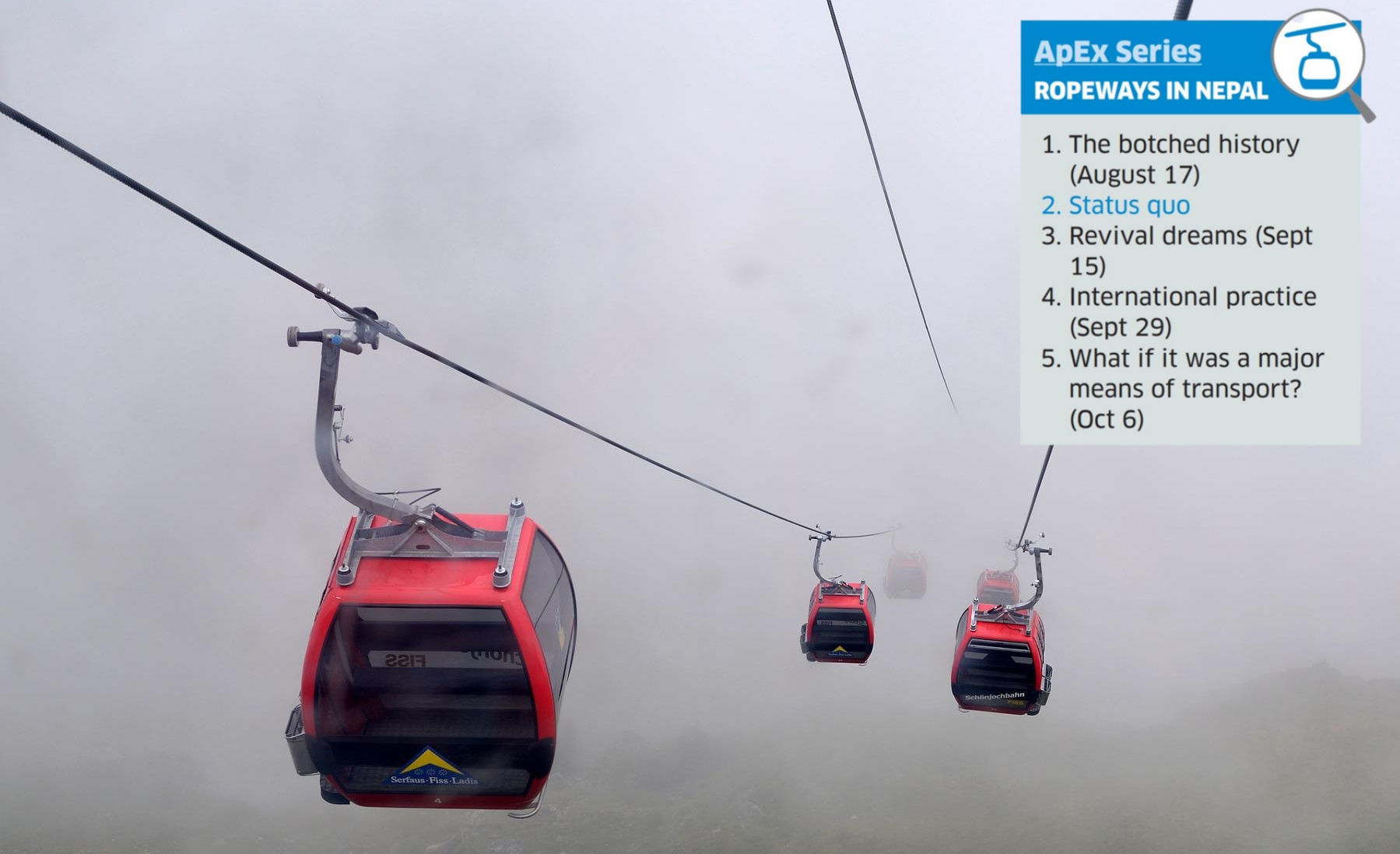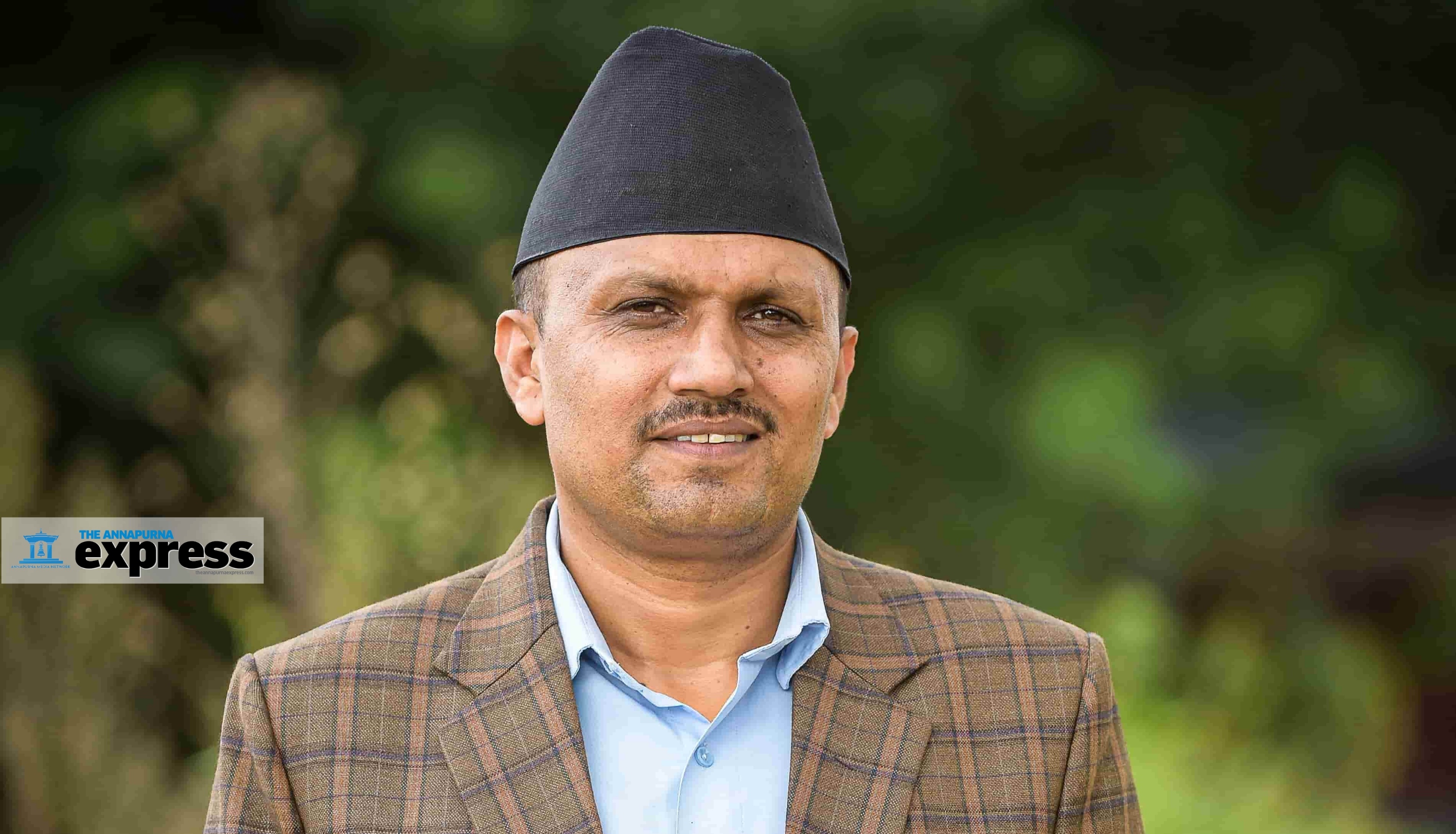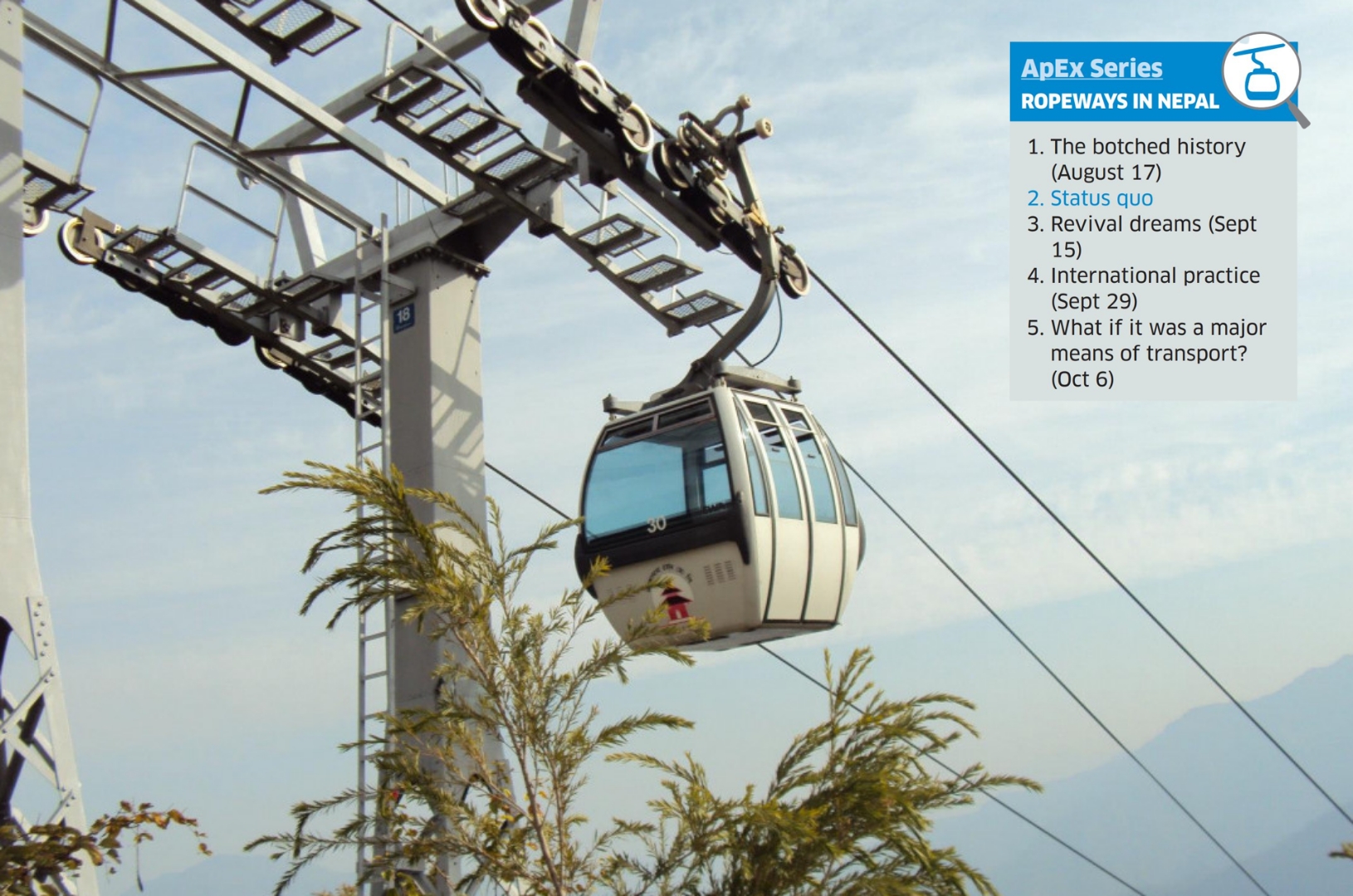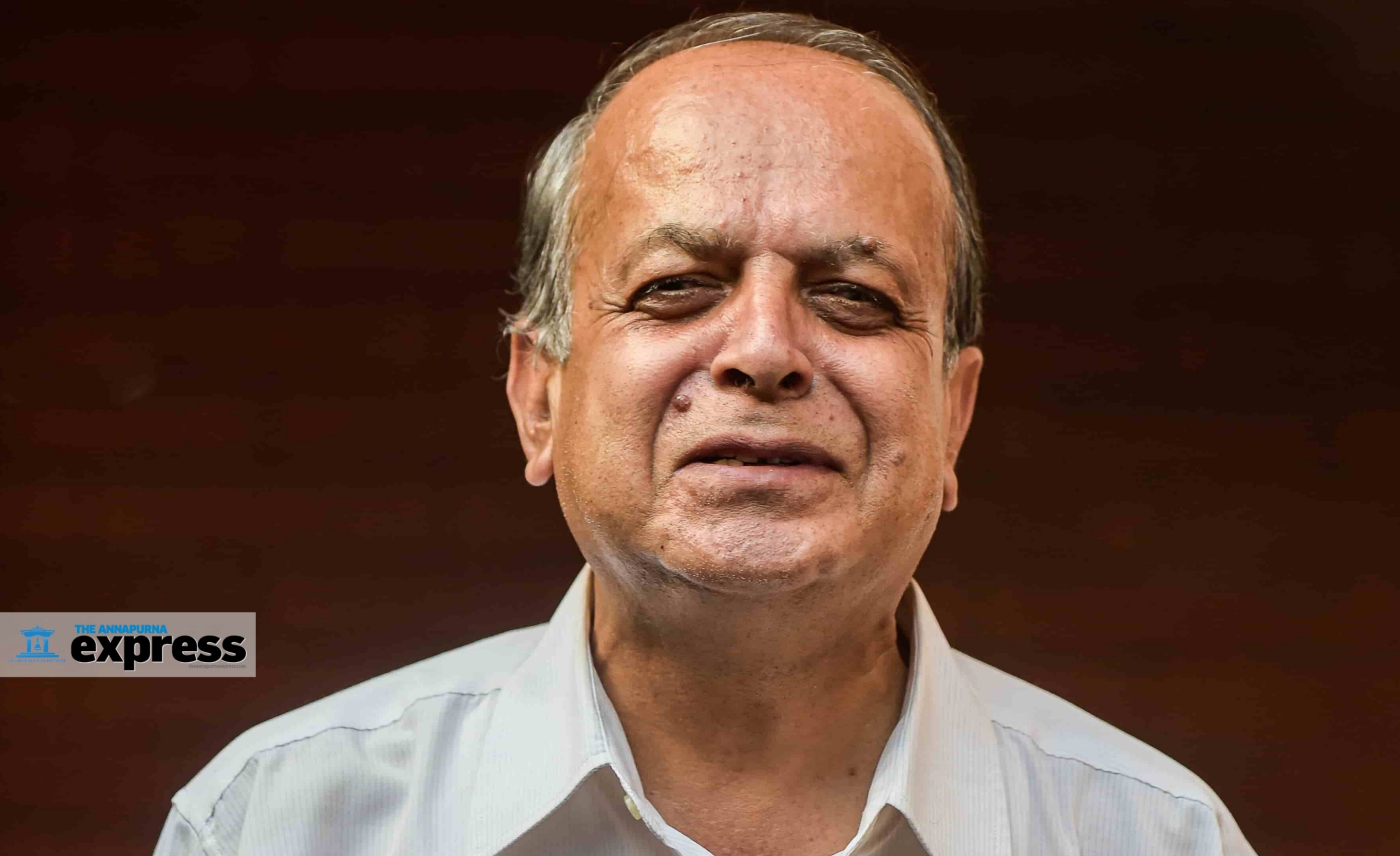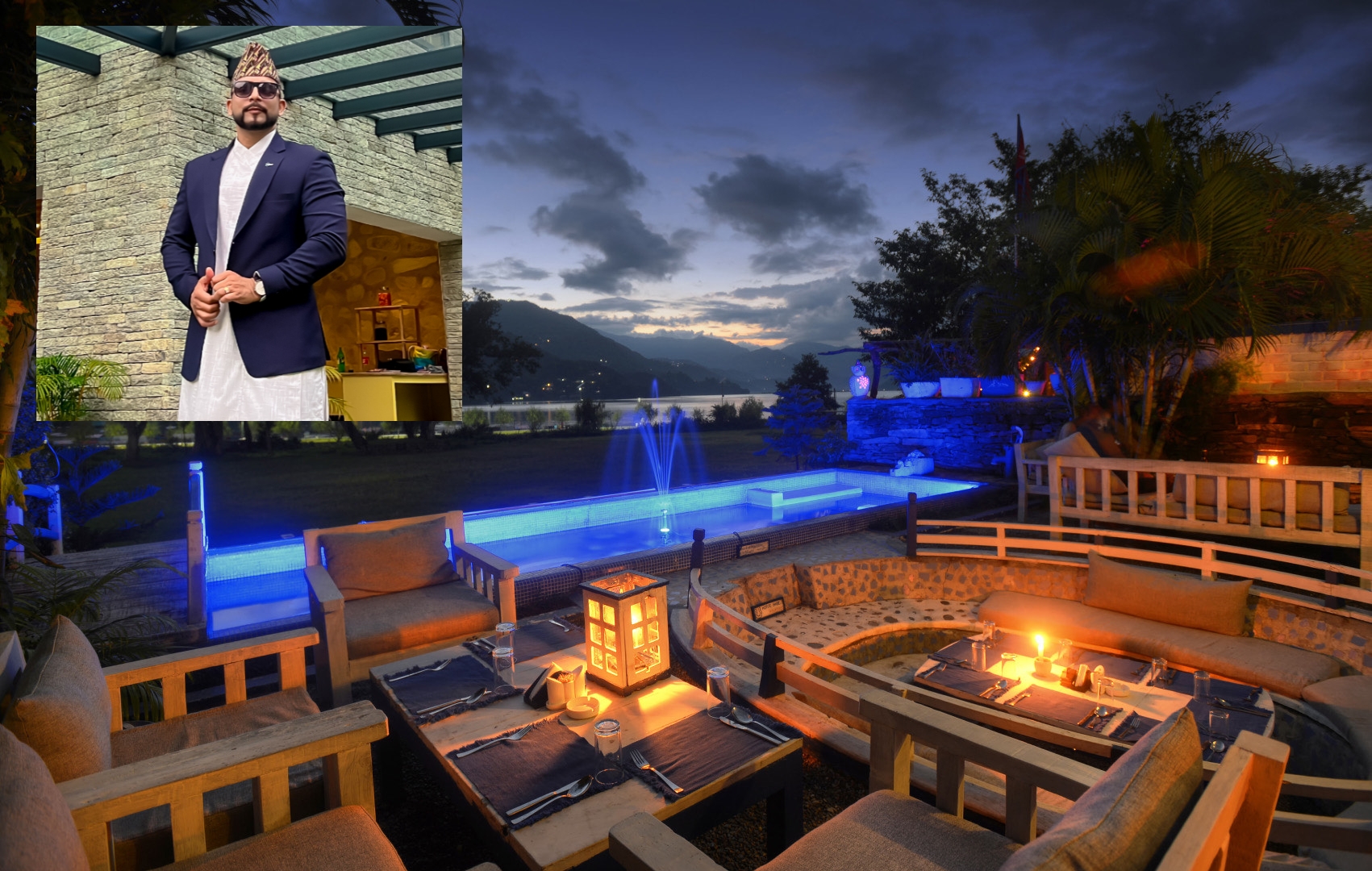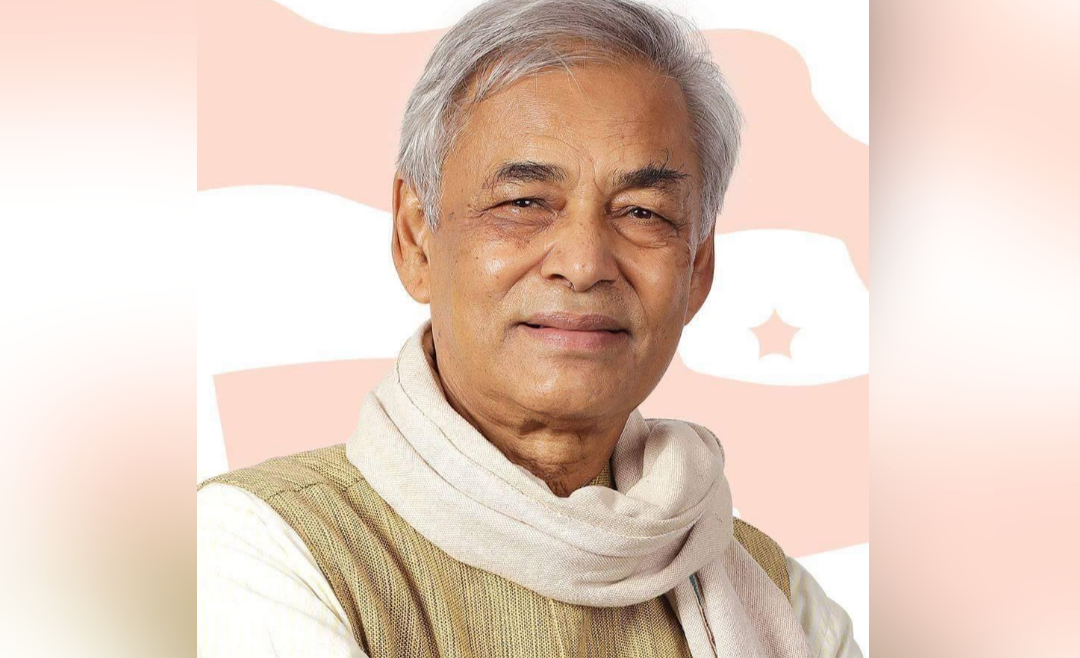ApEx Series: Let there be ropeways
Ropeways are an ideal means of human and goods transport in Nepal, a country filled with rugged mountains and hills. In fact, installing ropeways are six times cheaper than building roads. Yet there has been little interest in their development. Studies suggest Nepal could have up to 2,000 ropeways and feasibility studies have been completed on 62 of them. So what accounts for the paucity of ropeway carriages zipping over our hills and valleys?
The lengthy bureaucratic process is one problem. For instance, for an investor to build a ropeway, he or she has to get permits from 21 different government agencies. Cable cars—of the kind we see in Manakamana and Chandragiri—are also a kind of ropeway. The Manakamana cable car was first established in 1998. Quickly, the economy and job prospects of the surrounding areas were transformed. There could be no clearer case of a high social return on investment. Yet it would be another two decades before another cable car company came into operation. Surprisingly the government has taken no initiative to expand the reach of ropeways and cable cars. Private companies are doing all the heavy lifting.
This is a case of misplaced priorities. Politicians have forced people to see longer and wider roads as synonymous with development, despite the enormous environmental and financial costs incurred in the process. The cable car system could also be mighty useful in urban hubs. “Our politicians have been pitching for metro-rail and monorail to ease Kathmandu valley’s traffic congestion,” says Guna Raj Dhakal, chairperson of Ropeway Nepal Pvt Ltd. “But a cable car system could address the problem of urban mobility even better.” There is also ample scope, all around Nepal, for the ropeways that exclusively transport goods. Unlike the people-carrying cable cars, they don’t need that many permits to operate as well.
Read full story here.
Rudra Neupane: The brain behind Run Shoes success story
Rudra Neupane, 44, comes from a farming family background in Sindhupalchok. His village was at a remote part of the district, where there were no schools until the 1980s. Neupane went to school fairly late in his life and came to Kathmandu in 1994 for higher studies. In 1997, he was called back to his village to vote in the local elections, but he remained there for five years.
“I had gone home to vote but I stayed there after I was offered a teaching job in the high school that I attended as a child,” says Neupane. “Later on, I quit teaching and started working at the District Development Committee as a social mobilization officer.” He got married in 2001 with his wife, who was also a teacher. Neupane says his wife didn’t didn’t like the teaching field and wanted him to find another line of work. His work as a social mobilization officer, though a government job, was a temporary one, so he wanted to find a good stable employment.
“But finding a job was challenging back then,” Neupane says. “The difficulty in finding a decent job made me realize that I should rather start my own business and create jobs for others.” The couple decided to start a business but they had no promising entrepreneurial idea. They analyzed the market and consulted with friends and relatives. Neupane’s maternal uncles were already in the trade business, but it was not what he wanted.  “I was more inclined into agriculture-related business because of my farming background.” The agriculture-based business never panned out. The couple instead started Run Shoes Industries, a footwear company, in 2012. Neupane says the idea for the company came to him while working with footwear wholesalers to support his family in Kathmandu.
“I was more inclined into agriculture-related business because of my farming background.” The agriculture-based business never panned out. The couple instead started Run Shoes Industries, a footwear company, in 2012. Neupane says the idea for the company came to him while working with footwear wholesalers to support his family in Kathmandu.
“Had those footwear wholesalers not supported me technically and financially, I could not have started this company,” he says. “So all the thanks and gratitude go to them.” Neupane started Run Shoes with an investment of Rs 20m and within a couple of years, expanded the company’s footwear market across Nepal. The company is now worth Rs 500m, according to Neupane’s own estimates. The company owns two footwear factories in Bode, Bhaktapur, and in Mulpani, Kathmandu, and employs 250 workers.
In the early days, Run Shoes used to import soles for its footwear from China, Singapore and South Korea but today, the company itself produces the soles and other parts. “The only thing we import is the raw materials to make soles,” says Neupane. With the success of the footwear business, Neupane is also branching out to other areas of business. He has also started a garment factory and is involved in a couple of hydropower projects.
Besides, he is also working toward realizing his long-held dream of starting an agro-based company. “The company will not be for profit. It will be there just to facilitate farmers and provide them with good tools and technologies.”
ApEx Series: High in potential, low in execution
Five ropeways for human transport and almost a dozen gravity goods ropeways are in operation in Nepal. Ropeways are an ideal mode of human and goods transport for Nepal’s hill- and mountain-dominant terrains. Their potential, however, is yet to be fully realized. Reports suggest that the country could have ropeways in nearly 2,000 areas and feasibility studies have been conducted in 62 places. But to install a ropeway for people transport in Nepal, an investor has to get approval from 21 different government authorities.
“We’ll not attract investors unless our bureaucratic hurdles are simplified,” says Guna Raj Dhakal, chairperson of Ropeway Nepal Pvt Ltd. Installing ropeways is six times cheaper than building roads and the maintenance cost is also low. The 42-km Hetauda-Kathmandu Ropeway, for instance, cost half as much as the Tribhuvan Highway on the same route to build. “Yet the government is still skeptical about ropeways,” adds Dhakal. “We don’t even have a dedicated ropeway department or policies for that matter.” When CPN (Maoist Center) joined mainstream politics after signing the Comprehensive Peace Accord in 2006, the party committed to installing around 50 government-run ropeways in its first election manifesto. The party has been in almost every government since, but the old promise is yet to be fulfilled.
Haribol Gajurel, the party’s deputy general secretary, blames political instability for this state of affairs. “Our party led the government only twice and only for short durations,” he says. “We were unable to work on our plans.” He says ropeways are still on the list of his party’s priority projects.
Tulsi Gautam, spokesperson for the Ministry of Physical Infrastructure and Transport, says the ministry is well aware of the ropeway’s potential in Nepal, and its suitability in terms of both cost and practicality. “However the government as of now has no plans to commission a ropeway project on its own.” He says it is normal for a ropeway company to get approval from many government agencies. “Even the process of obtaining a citizenship requires several approvals and recommendations,” he adds, making the case for the rigmarole of ropeway project approval. 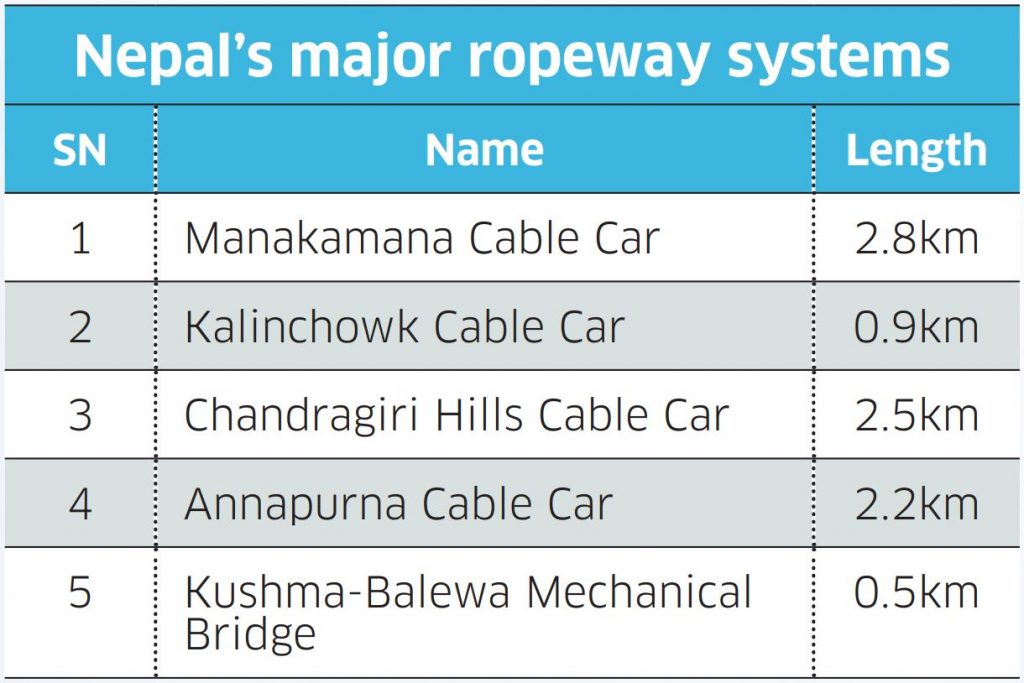 Manakamana cable car was the first of its kind in Nepal. Manakamana Temple and nearby villages, situated at the top of a hill in Gorkha district, were an isolated place until 1998. People had to walk for almost six hours from Aabukhaireni to reach the top. But things changed drastically after Manakamana Darshan Pvt Ltd started the cable car operation. It transformed the Manakamana area by pulling in over a million tourists a year.
Manakamana cable car was the first of its kind in Nepal. Manakamana Temple and nearby villages, situated at the top of a hill in Gorkha district, were an isolated place until 1998. People had to walk for almost six hours from Aabukhaireni to reach the top. But things changed drastically after Manakamana Darshan Pvt Ltd started the cable car operation. It transformed the Manakamana area by pulling in over a million tourists a year.
Businesses around the area flourished and many new jobs were created. “The benefits of the cable car system were not limited to people living in Manakamana area, but also touched the locals of Kurintar, Malekhu, Munglin, and even Naubise,” says Dilli Narayan Kayastha, the company’s managing director. “I have seen hotels nearby shut down when we closed for maintenance.” It took nearly two decades after Manakamana cable car for Nepal to get another ropeway transport service—Chandragiri Hills Pvt Ltd in Kathmandu, to be followed by Kalinchowk Darshan Ltd in Dolakha and Annapurna Cable Car in Kaski. All of them are privately funded projects.
Also read: Nepal’s most iconic ropeways—now abandoned
“Despite the hurdles, over two dozen cable car services are either in the process of commercial operation, construction or feasibility study,” says Dhakal of Ropeway Nepal.
IME Group, which built Chandragiri Cable Car under Chandragiri Hills Pvt. Ltd., is currently working on five additional cable car services. These include Gaidakot-Maulakalika (1.2km), Butwal Bazar-Basantapur (3km), Chisapani Highway-Rajkada (Kailali), Sikles-Kori (Kaski) and Ghantikhola-Swargadwari Temple in Pyuthan district.
Works are also afoot to start a cable car service in Pathivara Temple in Taplejung. Besides, private companies are conducting ropeway transport feasibility studies in Dakshinkali-Chaukhatdevi, Budhanilkantha-Shivapuri Hill and Bohoratar-Nagarjun Hill in Kathmandu; Godawari-Phulchowki Hill in Lalitpur; Ghorahi-Swargadwari Temple in Pyuthan; Ghyangphedi-Gosainkunda in Rasuwa; Lukla-Namche Bazar in Solukhumbu; Devghat-Moulakalika Temple in Chitwan; and Ranital-Maulakalika in Nawalparasi. Nepal Investment Board is also facilitating the study for an 84-km cable car service from Birethanti-Kagbeni-Ranipauwa to Muktinath Temple in Mustang. If implemented, the project is expected to significantly boost tourism and improve the livelihood of local people. 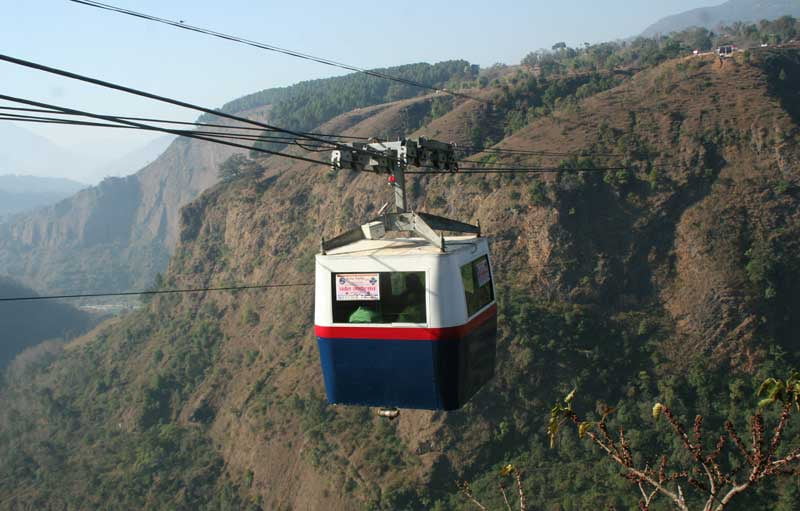
Dhakal says though cable cars conjure up an image of a major pilgrimage site or tourist destination somewhere in a hill or mountain terrain, they could also help address the problem of traffic congestion in city areas. “Our politicians have been pitching for metro-rail and monorail to ease Kathmandu valley’s traffic congestion,” he adds. “But I believe that the cable car system could better address the problem of urban mobility.” Ganesh Ram Sinkemana, an expert on gravity goods ropeways, has installed ropeways in various parts of Nepal, India, and Bhutan. He says gravity ropeways are perfect for transporting goods as they do not need external power to operate. “Two linked trolleys, on pulleys, run on separate wires suspended from towers. As the full trolley comes down, pulled by the weight of its load, it pulls the empty one up, ready for the next load,” says Sinkemana.
Unlike ropeways for transporting people, gravity goods ropeways do not require many approvals. Just the permit of the respective local government will do. Sinkemana firmly believes that ropeway technology will maximize the use of locally available resources and manpower, creating jobs and business opportunities. “Yet we are not building them. Our politicians are more interested in having expensive roads and bridges.”
When Kushma-Balewa Mechanical Bridge, a ropeway system, was constructed in 2013 to connect two hills of Kushma and Parbat separated by the Kaligandaki River, the four-hour journey between the two places was reduced to four minutes. Local businesspersons initiated the project after the government ignored their request to install a suspension bridge to ease the mobility of goods and people.
“The government did not help us. So we took it upon ourselves and built this ropeway,” says Hom Narayan Shrestha, chairperson of Kushma Balewa Mechanical Bridge Company. Much like Kushma-Balewa Mechanical Bridge, Kotre-Punitar Mechanical Bridge was also built without government assistance in order to connect Tanahu and Kaski.
But it was shut down following the installation of a suspension bridge. Ram Chandra Khanal, chairperson of Kotre Punitar Mechanical Bridge Company, says ropeway transport had to be shut even though many locals favored it over the suspension bridge. “If the government had supported us, we would have revived this technology as the locals are also in favor of Yantrik Pul instead of suspension bridge,” says Khanal.
Dr Baburam Marasini: Discarded tires chiefly to blame for dengue
Health officials have reported a dengue outbreak in Kathmandu and other parts of the country. According to the Epidemiology and Disease Control Division (EDCD), 70 districts across the country have reported a rise in the disease-incidence. Between January and July, there have been over 1,100 known dengue cases. Pratik Ghimire of ApEx talks to Dr Baburam Marasini, public health expert and former EDCD director.
Can you briefly explain dengue’s history in Nepal?
Nepal saw a massive outbreak of malaria in 1958. To fight the disease, a program was launched to eradicate malaria with the assistance of the US. The situation had become largely normal by the 2000s but soon after the program was discontinued, the number of mosquito-borne diseases started to increase again. The first case of dengue in Nepal was reported in 2004 and since, we have been seeing the disease every year, particularly in the Tarai districts. In 2010, over 900 dengue cases and five deaths were reported, in what was Nepal’s first dengue epidemic. Dengue was classified as an epidemic in 2016, 2017, 2018 and 2019 as well, with the disease stalking more than 60 districts.
Dengue used to be common only in the Tarai. But lately, cases have been seen in Kathmandu and other hill regions. What is that the case?
Kathmandu’s weather was not suitable for the mosquitoes carrying dengue virus until a couple of years ago. But in recent years, Kathmandu has witnessed a rise in temperature. As a result, the mosquito species (Aedes aegypti) known to spread dengue and malaria started migrating to Kathmandu and other hill districts. Climate change has contributed to this situation. An infected mosquito lays 500 to 1,000 infected eggs in its lifespan of around 30 days and has a coverage area of 500 meters. So, it won’t take long for infection to spread. 
What can we do to protect ourselves against dengue?
The most important thing is not to let mosquitoes breed in our surroundings. Mosquitoes breed in stagnant water, so people should maintain clean surroundings. Discarded tires are chiefly to blame for spreading dengue. They are ideal breeding grounds for dengue-causing mosquitoes. They should be properly disposed. The water in the air conditioner should also be regularly changed, so that the mosquitoes cannot breed there. It is also important to regularly clean our bathrooms and areas where water accumulates. Installing wire mesh on doors and windows, wearing full-sleeve clothes and using mosquito repellent lotion are also effective solutions.
Can there be policy-level interventions to eradicate dengue?
There must be strict laws. First, the government must regulate the way discarded tires are managed. They must be packed in plastic and should not contain water inside. For mosquitoes, tires are the best place to breed as the rubber does not absorb collected water. Lots of tires were burned during protests in Tarai over the new constitution in 2015. This led to a significant decline in mosquito-borne diseases in the region around that time. So you can see how discarded tires can spread dengue and malaria. Covering open drains and sewage systems is also important. Local governments must maintain them for the sake of public health.
The local governments have used fogging to fight dengue. Is that a good way out?
No. Fogging only kills mosquitoes, it does not eradicate them. Our program must focus on destroying mosquito larvae. Besides, fogging also kills other insects like honey bees and butterflies. It is in fact harmful to public health as well. Authorities are launching mosquito-fogging drives just to show that they are doing something to prevent mosquito-borne diseases. They should stop this publicity stunt and do some real work.
Renu Adhikari: Cases of domestic violence against women never decrease
Nepal Police recorded 13,716 cases of domestic violence against women in the fiscal year 2018/19. This figure dropped to 10,727 in 2019/20 before rising again to 12,832 in 2020/21. Many women rights organizations, including Women’s Rehabilitation Center Nepal (WOREC), believe the cases of domestic violence were grossly underreported during Covid-19 pandemic. Pratik Ghimire of ApEx talks to Renu Adhikari, chairperson of WOREC.
Why do you think cases of domestic violence increased during the pandemic?
The main reason is that everyone was cooped up in their homes for a long time. In households with a history of domestic violence and abuse, women were not safe. They might have been abused and beaten by their husbands and partners but the reporting mechanism was weak during the lockdown. As a result, cases of violence against women were underreported.
Did the cases decrease after the easing of the lockdown then?
Cases of domestic violence against women never decrease. Certainly, the reported case numbers fluctuate from one month to another, but that does not mean the incidents of domestic abuse and violence are going down. You can see this if you refer to WOREC’s monthly report. What we can deduce though is that cases drop during the festive holidays as the survivors do not report them. It was the same during the lockdown. 
Are our legal laws adequate to come to the help of domestic violence survivors?
They are. If you look at provisions for cases related to domestic violence (excluding sexual violence and others), they are progressive. Besides punishment to the abuser, our laws include the provisions of compensation, a safe house and counseling for the survivors. But what we lack is implementation. Those who are in charge of providing justice are simply unaware about these provisions. The way Nepali society treats its women is not helpful either. Our society further inflicts emotional and mental torture on the survivors. Take the recent case of Niharika Rajput, which again shows the general mindset of Nepali society towards a survivor of violence. Many people still don’t acknowledge the rights and identity of women.
How would you rate the life of survivors who have reached out to your organization?
If the survivors return to their abuser’s house, it is only a matter of time before they are abused and mistreated again. WOREC has come across many cases where survivors have come back to our organization seeking safety, as their decision to return to their abusers didn’t go as expected. But those who started living alone or with relatives are doing well. They are working to sustain their life and living independently.
What problems do those survivors living in shelter homes face?
I can’t tell you about other shelter homes but only our own. Teen pregnancy is a serious concern for us. There are child rape survivors who become pregnant. Their belly do not start showing until the sixth month and by that time they are past the abortion cutoff period. I have been raising this concern with the authorities, to no avail. While adult survivors can live independently after support and counseling, the same is not the case for young girls and teenagers. The authorities should come up with a plan to address this issue.
Hotline numbers
Nepal Government: 1234
Armed Police Force: 1114
Nepal Police: 100, 1113 (for rescue)
Ministry of Women, Children and Social Welfare: 1618014200082
National Women Commission: 1145
Transcultural Psychosocial Organization Nepal: 16600102005
WOREC: 16600178910
Shakti Samuha: 16600111117
Baibhav Paudel: Expanding the family business
Barahi Hospitality & Leisure has been serving customers for almost four decades now. The business that started out with an ordinary lodge in Pokhara has today expanded into a group of four-star hotels and restaurants. Pratik Ghimire of ApEx talks to Baibhav Paudel, the company director.
What attracted you to the hospitality business?
As Barahi is a business started by my father, I got to know about this sector from an early age. Also, I grew up in Pokhara’s Lakeside area, where my childhood was spent around tourists. I guess, that experience also drove me towards hospitality and tourism. I went to the US for my higher studies at 17. There, I learned more about hospitality and tourism. I did my master’s degree in International Business and I am currently doing my MBA in Tourism and Hospitality. Despite being a Green Card holder in America, my interest in this sector brought me back to Nepal to join my family business. Besides being the director of Barahi Hospitality & Leisure. I am also a board member of the Hotel Association as well as Restaurant Association Nepal. I am also serving as the president of Gandaki Toastmasters and have completed my tenure as the president of the Nepalese Young Entrepreneurs Forum. So I am closely tied to the hospitality and tourism industry of Nepal.
Tell us about your pandemic experience.
The tourism and hospitality sector was the first one to get hit and the last one to recover from the Covid-19 pandemic. Many businesses had to shut down. But we used the period focusing on renovation works of our hotels. We renovated all of our amenities, something we had been planning to do for a long time. We utilized the period perfectly.
What are the hotels that fall under Barahi Hospitality?
There are three in total. Hotel Barahi in Pokhara and Barahi Jungle Lodge in Chitwan are four-star properties. The other one is Sarangkot Mountain Lodge. Besides that, I have my startups too: Bobs Gym, Byanjan Restaurant, Bagaincha Wellness Resort and The Beach Bar and Lodge.
How is Barahi Hospitality & Leisure different from others?
We have a legacy that others don’t. In our 40 years of service, we have made ourselves a trusted brand. We also routinely upgrade and maintain our properties. Every five years, we do regular maintenance and renovations. We keep trying new designs and amenities in our hotels to satisfy our customers’ needs.
What changes did your leadership bring to the business?
I have focused on expanding our branches. Next month, we are planning to open Barahi Plaza in Kathmandu. In Pokhara, a new project, Barahi Sedi, is under construction and two more projects, Bastup Resort in Pokhara and Barahi Bodhi in Lumbini, are in the designing phase.
What is your advice to aspiring entrepreneurs?
I suggest them not to rush. Quite often, I have seen young entrepreneurs expecting profit right after the investment, but the business doesn’t work like that. You have to wait for years. Many aspiring entrepreneurs were skeptical about investing due to the pandemic but as things have eased now, I hope they will enter into business.
Remembering Pradip Giri: Towering intellectual with a young heart
Birth: 10 Oct 1947, Siraha
Death: 20 Aug 2022, Lalitpur
I met Pradip Giri in person in early 2020, at a protest against the government decision to slap 10 percent customs duty on imported books. We were holding a petition-signing event and had invited students, readers and scholars who considered books an important part of their lives. He was among the handful of prominent figures to show up at the program organized by a loose group of students. Very few youth political leaders were in attendance. But Giri, a Nepali Congress veteran widely hailed as a socialist thinker, was there.
To say we were honored by his presence would be an understatement. The intellectual leader was forthright and funny. Finding himself in the midst of smartphone-wielding, selfie-taking youths, he asked, with a smile on face, if we were organizing the event just as a social media stunt. He also wanted to know about our favorite books and authors.
Giri peppered us with questions about books and literature that day, and we tried, as best we could, to satisfy his curiosity. After listening to us, he suggested what books and authors we should read. He seemed pleased that the reading culture had not died in Nepal, and that the youths—not the scholars, writers, or civil society members—were leading the protest against the book tax.
When we informed Giri that the police had detained us twice for protesting. He advised us to keep protesting, no matter what. “To safeguard democracy, you have to keep up pressure on those in power,” he told us. “Your bottom line should be the fulfillment of your demand—don’t settle for anything less.” We were a fairly small group standing up against the powers that be. His vote of confidence gave us courage to persevere.
“Democracy is not just about the majority. Each voice must be heard,” Giri used to say on the parliament floor and at public gatherings. He championed the cause of minorities—and why he had decided to show up at our protest that day. He wanted competent young people to lead the country, and so he would visit youth-led campaigns to motivate them.
Within his own party, he was in favor of young leaders taking leadership. This made him an outlier among his party peers. Yes, Giri was a Congress leader but he always stood for the right cause, even if it meant going against his own party. A strong advocate of socialism, Giri was a strong supporter of non-violence, yet in his view, the decade-long Maosit movement was the base of ensuring the rights of Madhesis, Dalits and women.
When Nepal promulgated the new constitution in 2015, he defied the party whip and refused to endorse the charter, arguing that it did not address the concerns of Madhesi people. Nepali Congress did not punish him for the disobedience.
Born into a political family in Siraha district, Giri was introduced to politics in his late teens. He went to Jawaharlal Nehru University in India, where he made many friends who went on to become top politicians. He himself eschewed executive roles throughout his political career, for which he was applauded by one and all in Nepal, a country that has had more than enough power-hungry politicians.
During his student years in India, he was highly influenced by the socialist movement of Jayprakash Narayan and Ram Manohar Lohia. Giri was a highly learned man, whose interests ranged from politics to theology to philosophy. He was a politician, a public intellect, a thinker and a champion of the downtrodden. We are all poorer for his death.
ApEx Series: Doing ropeways again
Ropeways can be a vital means of goods-transport in a country like Nepal with its rugged terrains and ever-present risks of roads being blocked by water-induced disasters. Compared to air and road transport, ropeway transport is cheaper too.
The importance of ropeways for Nepal had become evident even a century ago: construction on the country’s first ropeway, the 22-km link between Makawanpur and Kathmandu, had started in 1922 under the orders of Prime Minister Chandra Shamsher. In the latter half of the 20th century, the country had many more ropeway lines.
In 1986, Hetauda Cement Factory started one to ferry limestones. In 1995, the Conservation Ropeway was built at Bhattedanda on the outskirts of Kathmandu valley to transport milk. There were a few other lines as well. But they soon fell into disuse as the national focus shifted to road-building, despite clear evidence of the cost-effectiveness of the ropeways.
Now the discourse on the revival of ropeways in Nepal has again started. We explore the various dimensions of this debate in this five-part, bi-weekly ApEx series.
Part I: Nepal’s most iconic ropeways—now abandoned
Part II: High in potential, low in execution
Part III: Is ropeway revival possible?
Part IV: International ropeway practices and lessons for Nepal


